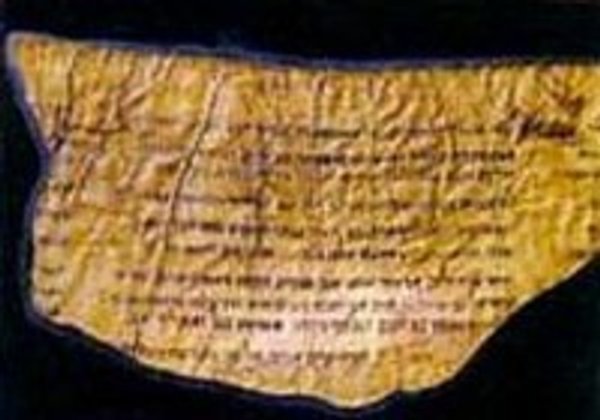● The Nag Hammadi Library is a collection of thirteen ancient leather-covered codices containing over fifty texts.
► These were accidentally discovered in an earthenware jar by a group of farmers in upper Egypt in 1945, near Quenoboskion, a village 6 miles from the modern city of Nag Hammadi.
► They are now kept in the Coptic Museum in Cairo, and are described with the acronym NHC (Nag Hammadi Codices).
► There are another 3 codices which allegedly belong to the same collection, dated from 18th century and which are kept in London (Codex Aksewianus, usually known as Pistis Sophia), in Oxford (Codex Brucianus) and in Berlin (Codex Berolinensis). These three codices, although not as old, come from the same area.
● The NHC were written up around 330 A.D. and buried towards the end of the 4th century/the beginning of the 5th century.
► These codices have around 50 works written in Coptic – the Egyptian language spoken by Christians there and written with Greek characters – which are translations from the Greek, and usually not very reliable.
► Nearly all the works are heretical in character, reflecting various Gnostic tendencies. Most of these were already known because they were argued against by the Fathers of the Church, specially St Irenaeus, St Hippolito of Rome and St Epiphanius.
► The main contribution of these codices is that we now have direct access to the proper Gnostic works and it can be seen that the Church Fathers knew very well what they were up against.
● From the literary point of view, one finds in NHC the most diverse genres: theological and philosophical treaties, apocalypses, gospels, prayers, acts of the Apostles, Letters, etc. At times, the titles are not as in the original, but have been added by editors depending on the content.
► With respect to the works that carry the title “gospel”, one can notice that they have little resemblance to the canonical gospels, as they do not represent a description of the life of our Lord, but instead relate the secret revelations that Jesus allegedly related to the disciples. For example:
–the gospel of St Thomas has 114 quotes from Jesus, one after another other, without any narrative text other than that of some questions the disciples sometimes asked;
– the “Gospel of Mary (Magdalene)” narrates the revelation of the glorious Christ she had about the ascension of the soul.
● From the point of view of their doctrines, the codices in general contain Christian Gnostic works; although some of them, like the “Apocryphal John” – one of the most important since it is appears in four of codices – the Gnostic myth forms its nucleus while the Christian features appear to be secondary.
► In this myth, the first chapters of Genesis are interpreted the other way round, presenting God the Creator, or Demiurge, as an inferior and perverse god who has created matter.
► But in the codices there are also Gnostic works which are not Christian and which collect a Graeco-pagan gnosis developed around the figure of Hermes Trismegistus, considered to be the great revealer of knowledge (“Discourse 8 and 9”). This type of gnosis was already partly known before such discoveries were made. In NHC VI there is even a fragment of a rewriting from “The Republic” by Plato.
